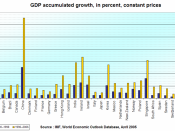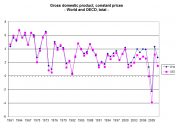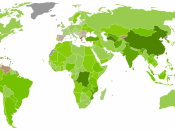1. Introduction Egypt is a country which has a well developed economy. It supported by agriculture, tourism and industry. There is a steady increase of the GNP and the annual growth rate. The 2003 estimation states that the GDP of the year 2003 is $295.2 billion with contributions of 17% from agriculture and 32% from industry. The remaining 51% was contributed from the service sector. The country is enriches with abundant natural resources which provides the country with a large income. Egypt's natural resources include petroleum, natural gas, phosphates, and iron ore and oil and gas accounted for approximately 7% of GDP of fiscal year 2000-01. The main imports of the country are machinery and equipment, foods, chemicals, wood products, fuels. Furthermore, their main export commodities are crude oil and petroleum products, cotton, textiles, metal products, chemicals.
The report provides information not only on the economy of Egypt but it further states about the population factors, distribution channels and also about media.
Moreover, the political risk assessment which includes the conflict situations and import and export regulations. These information is important for an exporter when doing business with foreign countries.
3.0 Economic Statistic and Activity 3.1 Gross National Product 3.1.1 Total GDP - Purchasing Power Parity - $316.3 billion (2004 est.) 3.1.2 Rate of growth GDP- real growth rate ? 4.5% (2004 est.) Year 1999 2000 2001 2002 2003 2004 GDP real growth rate (%) 6.1 5.4 3.5 3.2 3.1 4.5 (http://www.cia.gov/cia/publications/factbook/geos/eg.html) The GDP growth, which ranged between 4% and 6% during the 2nd half of the 1990s, declined steadily to 3.1% in 2003. Since then a recovery has taken place, driven mainly by growth rate of 4.5% in 2004. Due to the recovering that has taken a place, GRT tea exporters will be benefited exporting its product the Egypt...


